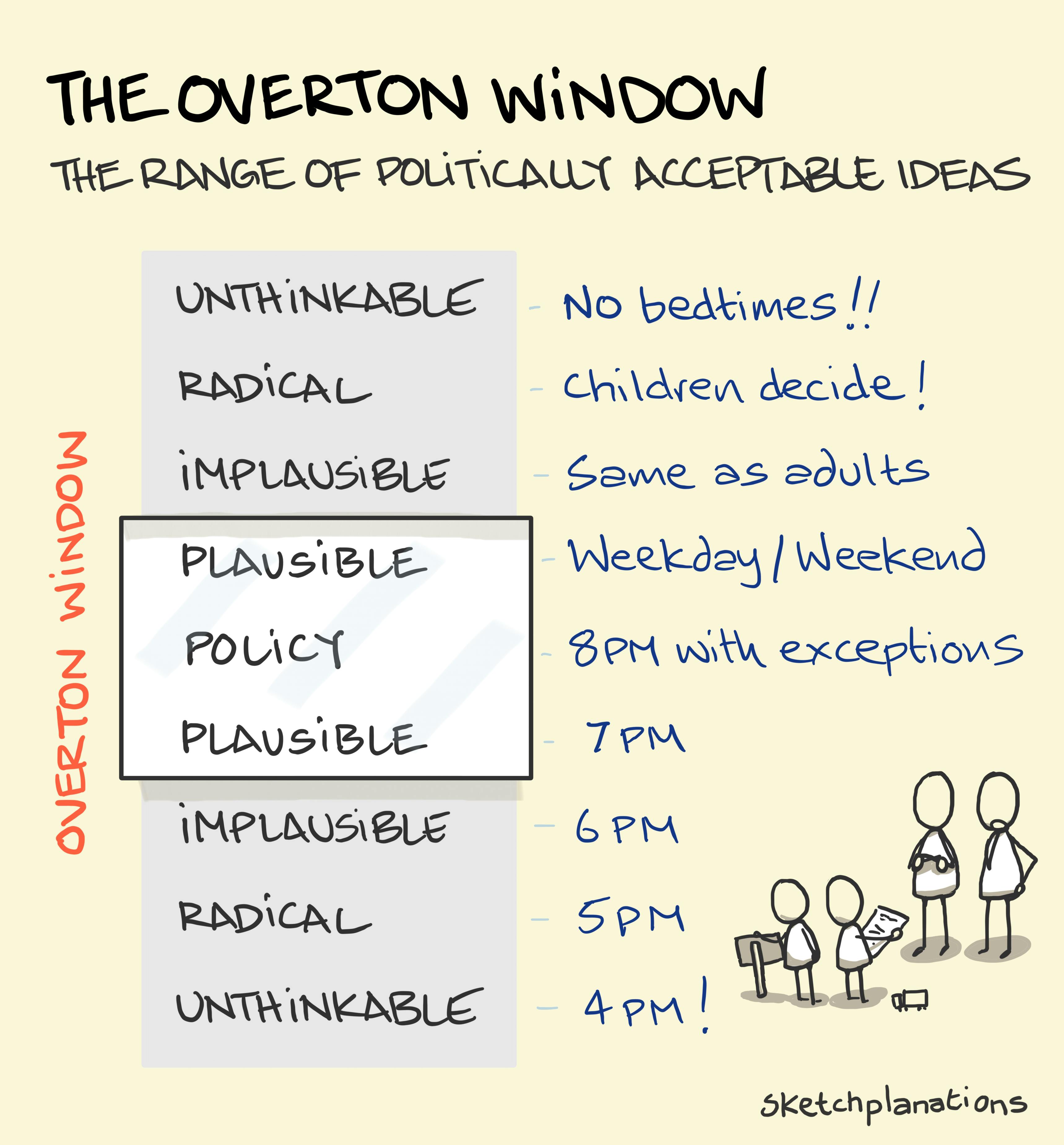The Overton Window

- Prints
- Copied!
👇 Get new sketches each week
The Overton window is a simple device to consider the full spectrum of policy ideas and identify the range of politically acceptable ones.
Attitudes generally change slowly, as does policy to support them—with exceptions. Ideas that seemed radical or unthinkable at one time may gradually become plausible and popular. As this happens, the Overton Window shifts or expands.
Consider how attitudes have changed towards slavery, segregation, women's rights, animal welfare or gay marriage. Or consider policies made alongside the development of driverless cars or supporting sustainable energy. At one time, prohibition—banning the production and sale of alcohol—was popular enough to become policy in the US, though it would be unlikely to be proposed now.
Generally, the public is unlikely to elect politicians if they stand on policies too far outside the Overton window. And elected politicians will have difficulty enacting policies outside the window.
Named after Joseph Overton of the Mackinac Center for Public Policy , the original model was a cardboard window that could slide over paper, and looking through the window, you could see policy options in one direction towards more government control and in the other towards less government control. He called it the window of political possibilities. The Centre named it after him after his death. He made the slider vertical to avoid associations with the political left or right.

